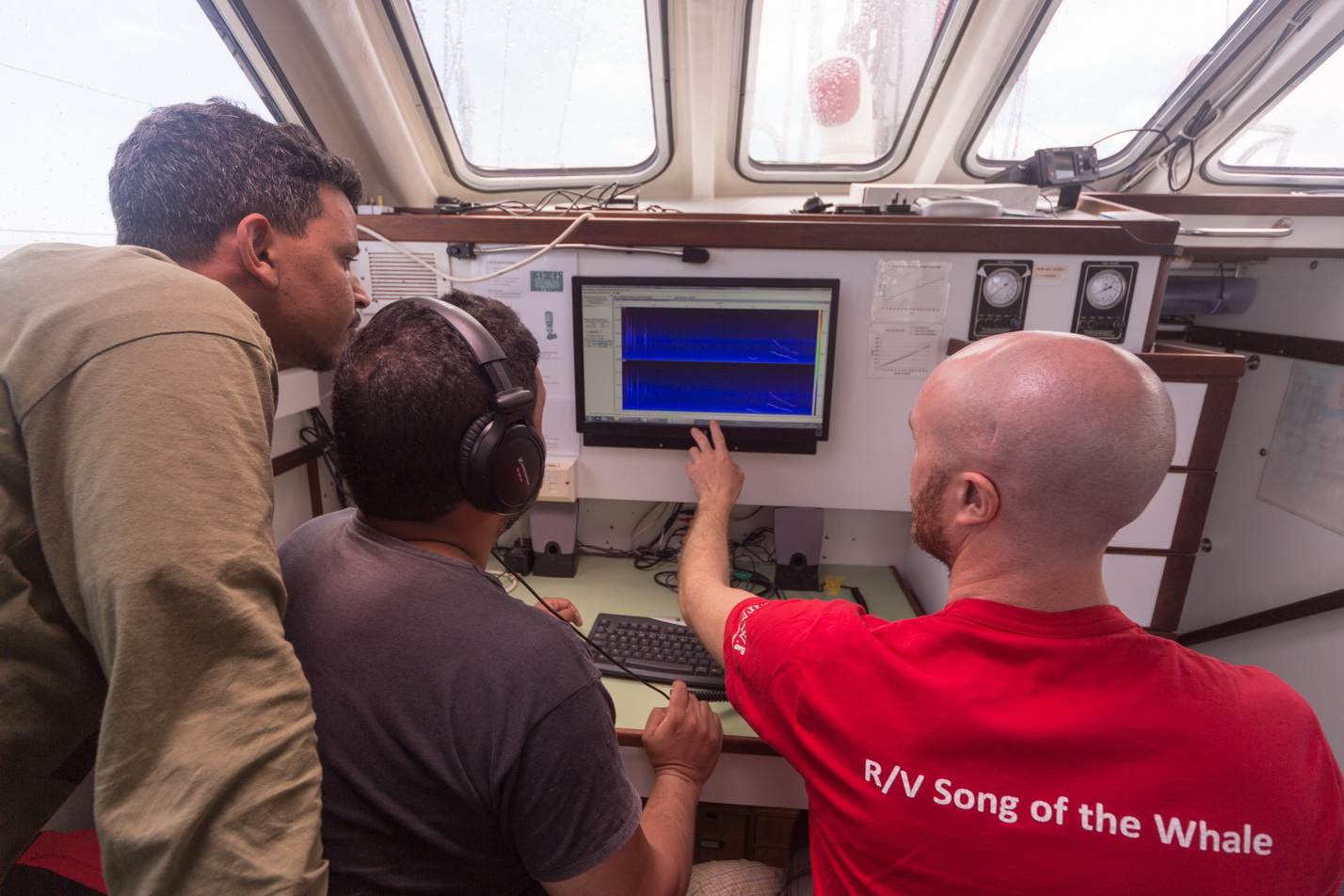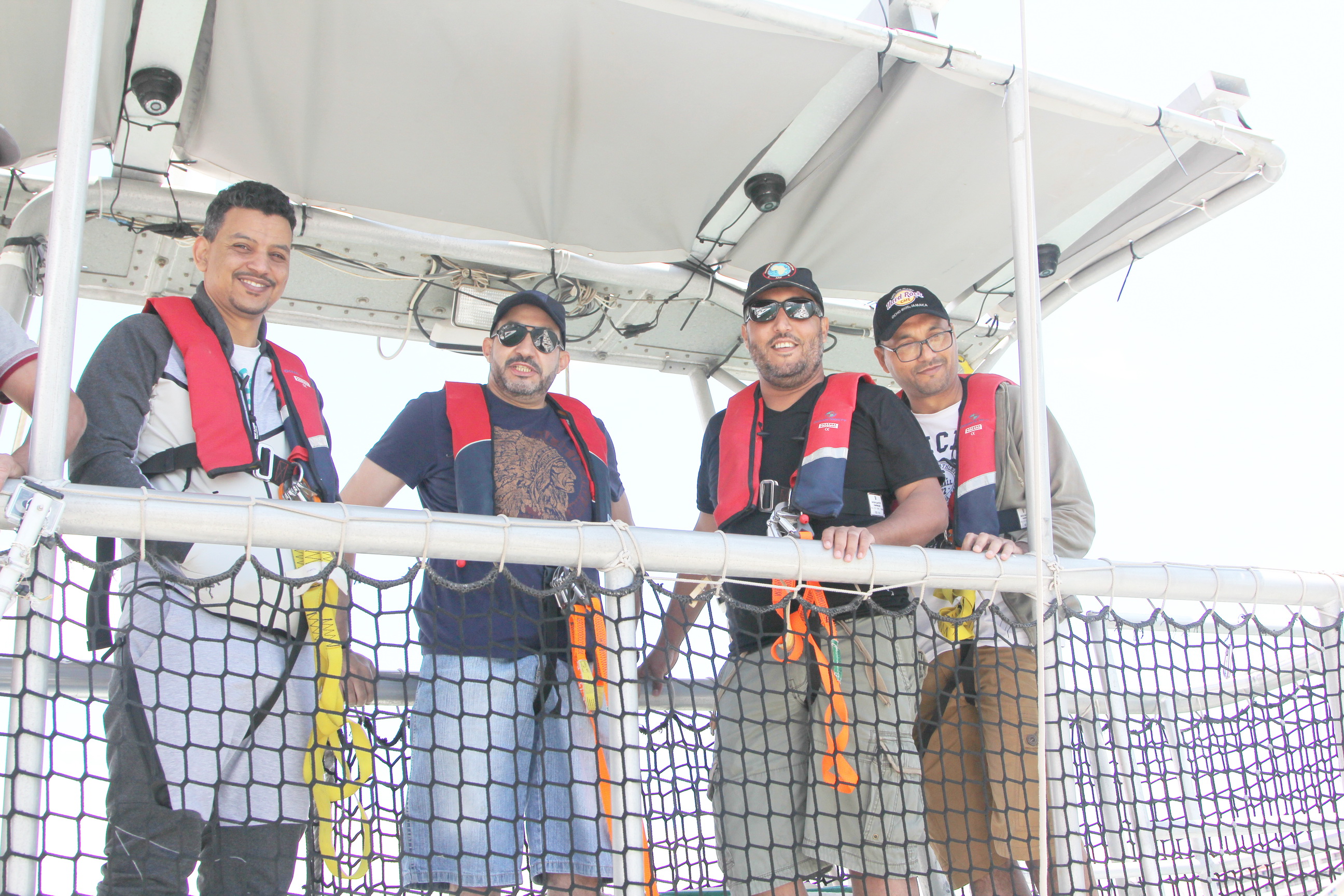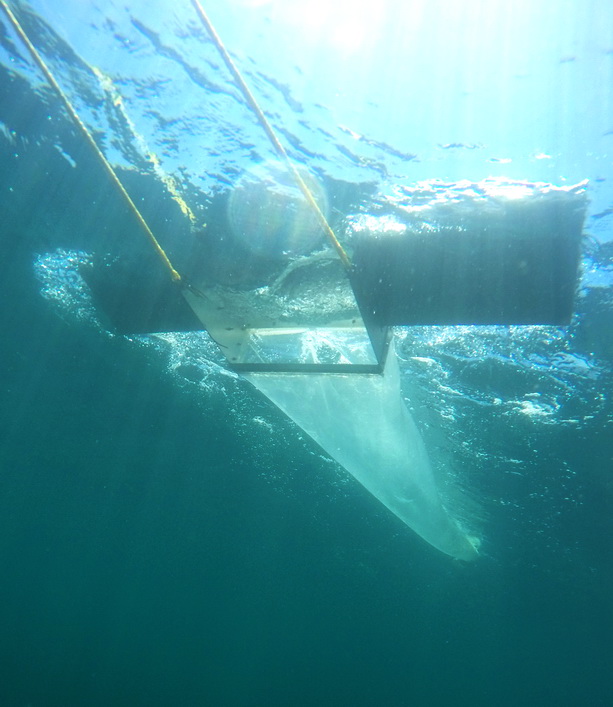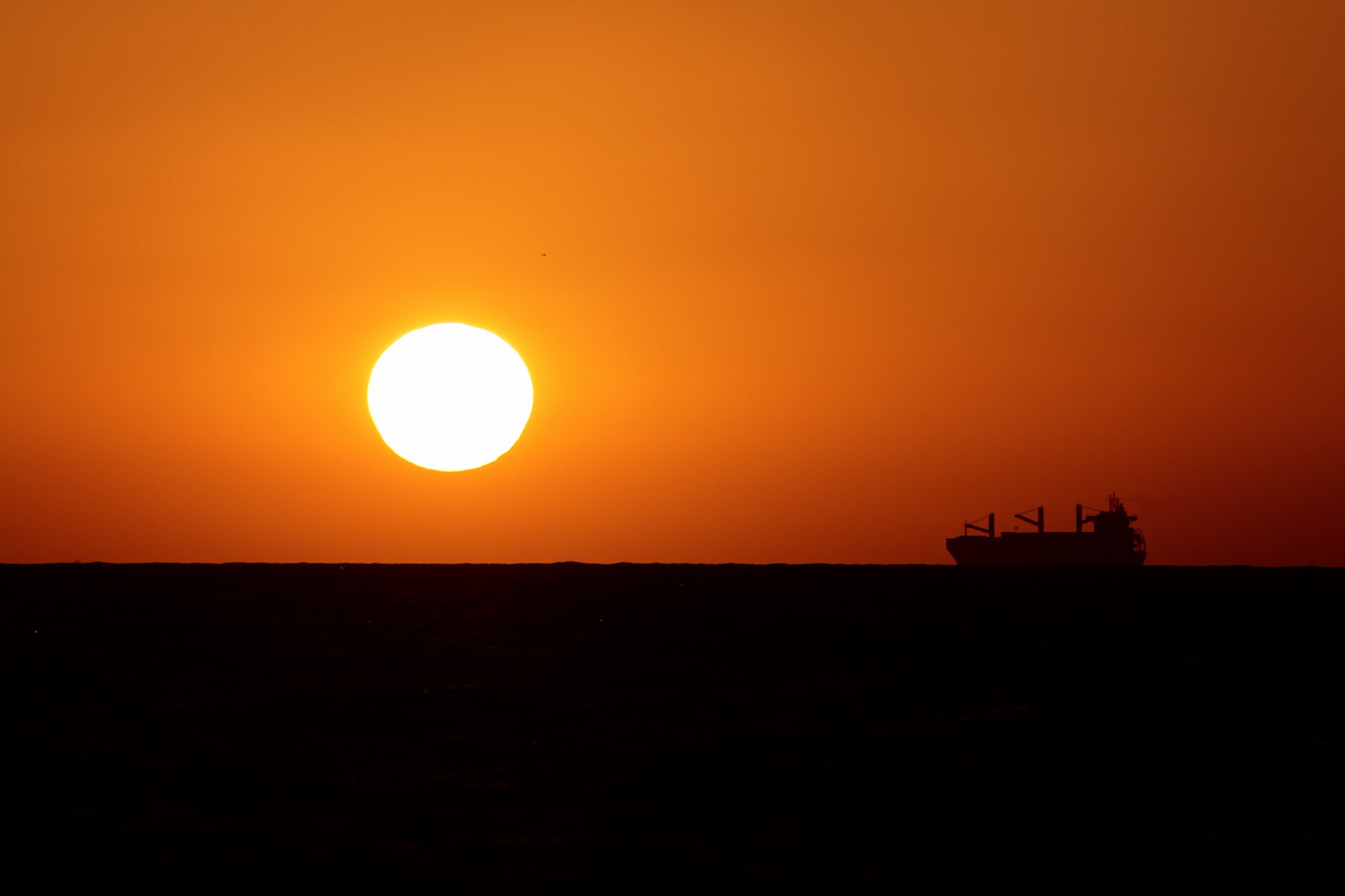Our team of ten departed Vilamoura, Portugal on 28 May for a 3-month visual and acoustic survey of the Mediterranean Sea. The Song of the Whale is one of several vessels undertaking the most comprehensive ‘snap-shot’ cetacean survey ever conducted of the Mediterranean Sea, the ACCOBAMS Survey Initiative (ASI). This project aims to estimate the abundance and describe the distribution of all cetacean species found in the Mediterranean. It is being carried out using combined at sea (vessels) and aerial (aircraft) based approach, between May and August 2018.
Our role on Song of the Whale is to focus on areas not covered by the aerial surveys, but also to conduct additional survey effort “on the ground” with a focus on deep-diving species. These whales, including beaked whales and the sperm whale spend the majority of their time at depth, thereby evading detection by visual surveys alone. The most effective way to locate these species is by passive acoustic monitoring – in this case, by towing a hydrophone array (series of underwater microphones) back and forth along our survey track lines.

Song of the Whale is hosting scientists from many of the ACCOBAMS coastal states. Given that the first two survey blocks included Moroccan waters, our Moroccan colleagues joined us for the first ten days at sea. While on board, they got stuck-in right away, learning how to conduct visual and acoustic surveys, while sharing their local knowledge of the study area. Among other things, the non-Moroccan team members learned about Ramadan (which is upon us) and about the marine protected areas and various fisheries which we observed in Moroccan waters.

Sea conditions were unseasonably challenging during our first 10 days of survey. Of the 2,134 km of transect and passage conducted, 63% were conducted in Beaufort sea states >3. Indeed, 27% were conducted in sea states >4, making for difficult working conditions. Thankfully, the hydrophone toils away day and night, regardless of sea conditions… now to think of it, so too do our team!
The most numerous species observed in the first two survey blocks was the striped dolphin, followed closely by the common and bottlenose dolphins. Although sperm whales were frequently detected on the hydrophone, we did not see any in the flesh. One memorable sighting was that of an excited group of long-finned pilot whales in the middle of the Alborán Sea. However, the most significant record for most of us was a close encounter with a pair of elusive Cuvier’s beaked whales in Atlantic waters off Morocco. Other beaked whales were detected acoustically but not seen; notably off the Gulf of Cadiz.

In addition to data on cetaceans and other megafauna (sunfish and loggerhead turtles were also seen), we are generating data on the presence of marine debris, both afloat and within the water column. Surface densities of small plastic particles were measured using a special sampling device called a manta trawl which we are using in partnership with 5 Gyres. We sampled Moroccan and Spanish coastal waters during rare episodes of calmer weather. Unfortunately, all samples were rich in small plastic particles.

The final tally of sightings from blocks 1 and 2 was impressive given the sub-optimal sighting conditions: we managed to identify 5 cetacean species from a total of 48 sightings. One thing is for certain – these figures will be bolstered by additional detections once we analyse the acoustic data later. With block 1 (contiguous Atlantic waters) and block 2 (Morocco and Spain) complete, we will head to Malaga for the project kick off event hosted by the IUCN Centre for Mediterranean Cooperation before continuing our survey eastwards. Unfortunately, now we must say farewell to our Moroccan friends but hope that we can sail with them again in the future.

Sorry, comments are closed for this post.